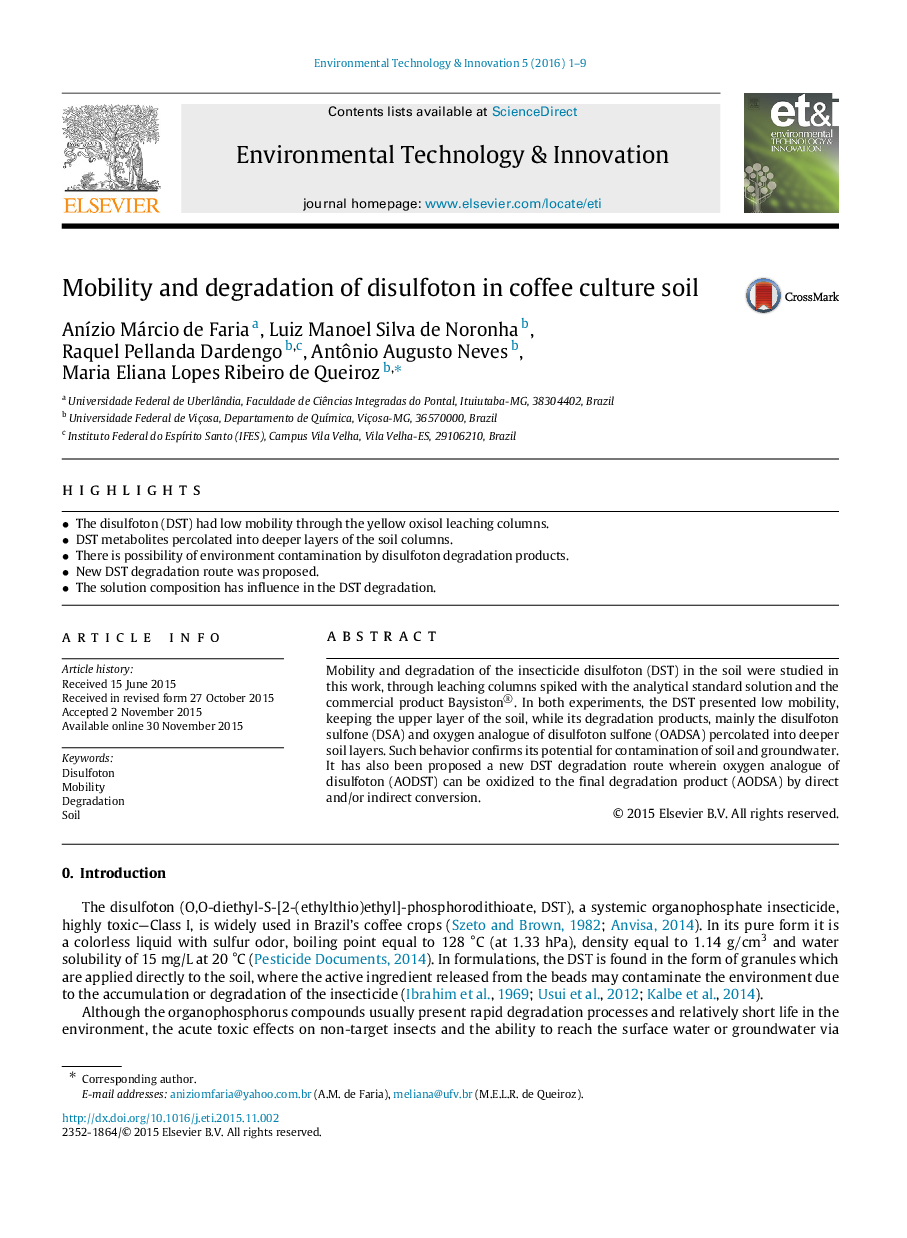| Article ID | Journal | Published Year | Pages | File Type |
|---|---|---|---|---|
| 4428189 | Environmental Technology & Innovation | 2016 | 9 Pages |
•The disulfoton (DST) had low mobility through the yellow oxisol leaching columns.•DST metabolites percolated into deeper layers of the soil columns.•There is possibility of environment contamination by disulfoton degradation products.•New DST degradation route was proposed.•The solution composition has influence in the DST degradation.
Mobility and degradation of the insecticide disulfoton (DST) in the soil were studied in this work, through leaching columns spiked with the analytical standard solution and the commercial product Baysiston®. In both experiments, the DST presented low mobility, keeping the upper layer of the soil, while its degradation products, mainly the disulfoton sulfone (DSA) and oxygen analogue of disulfoton sulfone (OADSA) percolated into deeper soil layers. Such behavior confirms its potential for contamination of soil and groundwater. It has also been proposed a new DST degradation route wherein oxygen analogue of disulfoton (AODST) can be oxidized to the final degradation product (AODSA) by direct and/or indirect conversion.
